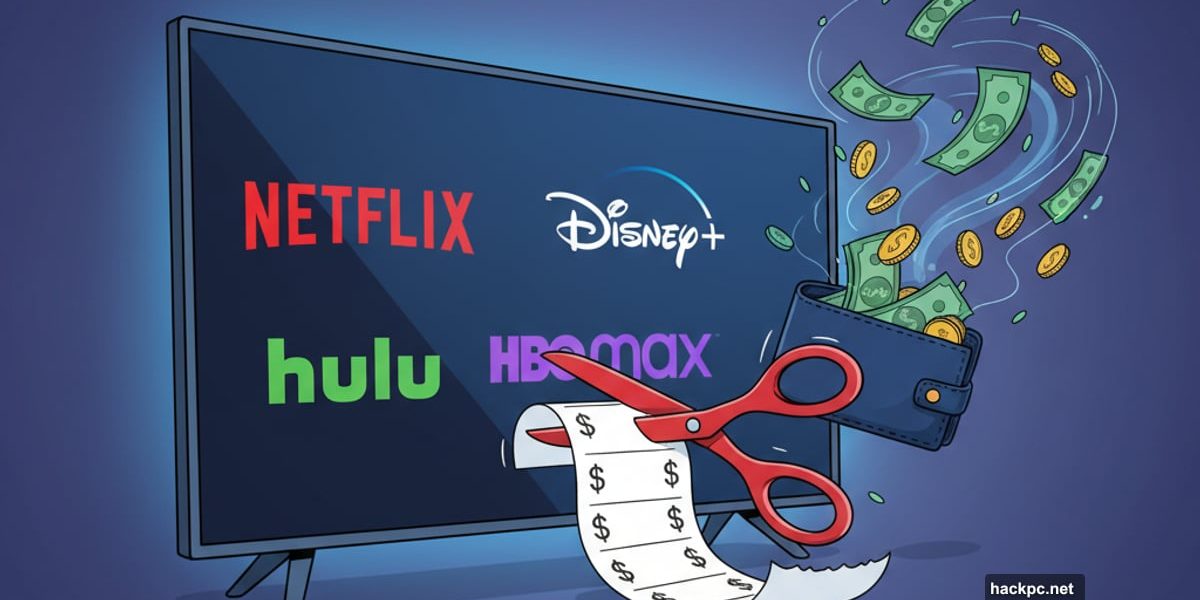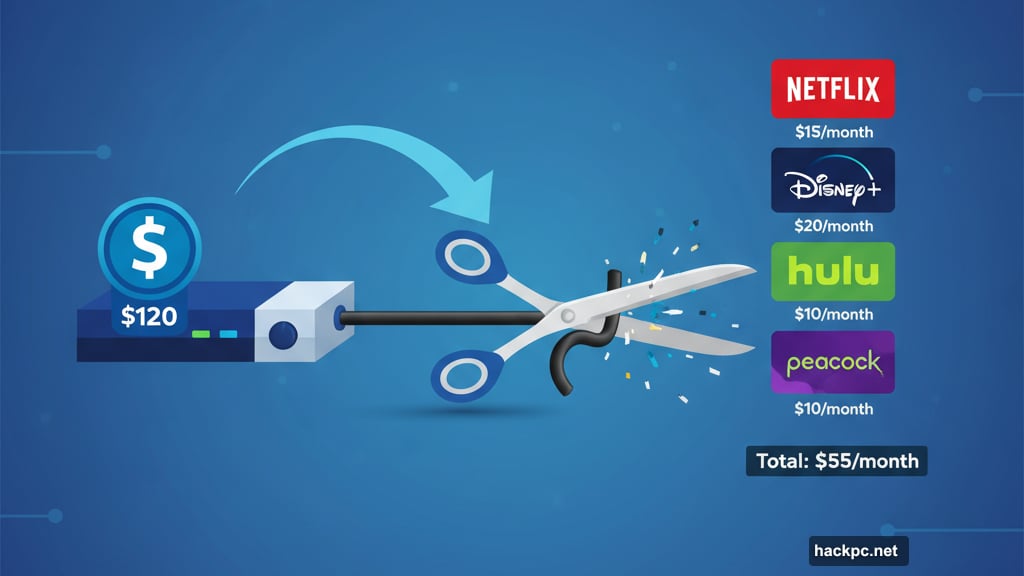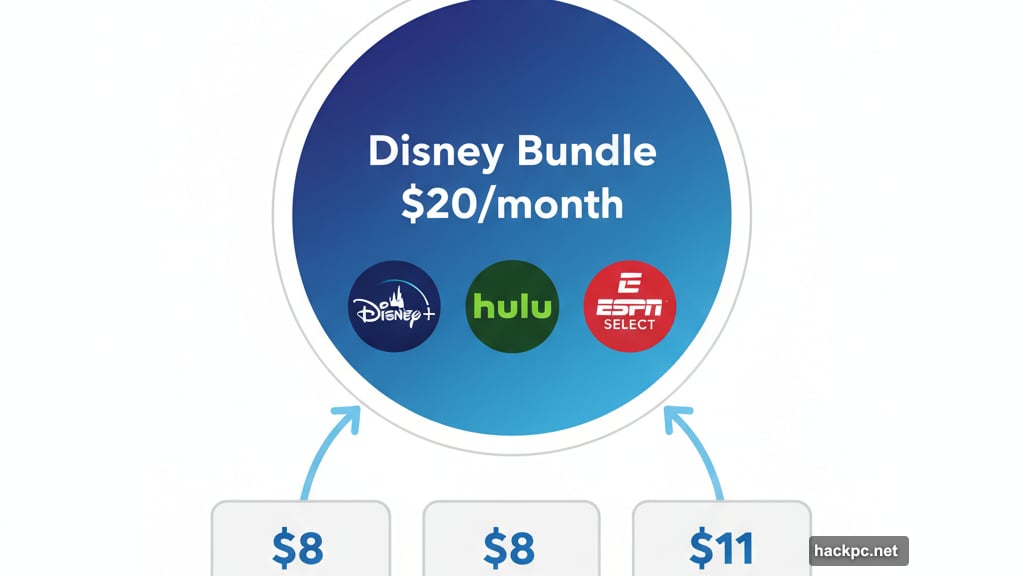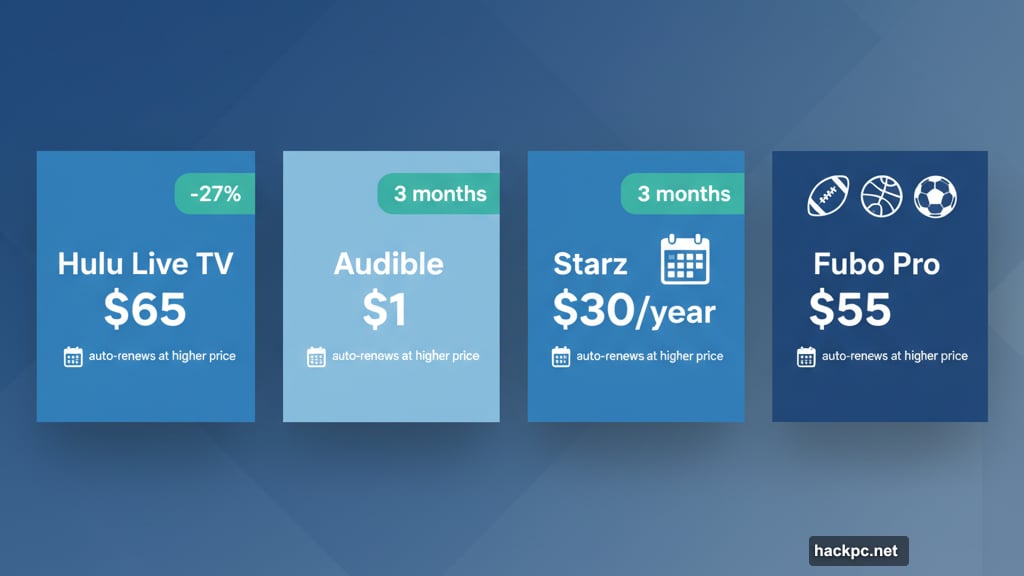
Streaming costs are out of control. What started as a cheap cable alternative now costs nearly as much as the cord you cut.
Netflix raised prices again. Disney+ followed suit. Even Peacock jumped on the bandwagon. So if you’re wondering whether streaming is still worth it, you’re not alone.
Good news? Deals still exist if you know where to look. Plus, smart bundling strategies can cut your monthly entertainment costs significantly. Let’s break down how to stream everything you want without emptying your wallet.
The Rare Deals Worth Grabbing Now
True streaming discounts don’t come around often. When they do, they’re usually limited-time offers on ad-supported tiers. But right now, several solid deals are actually available.
Hulu + Live TV dropped to $65 monthly for three months. That’s $25 off the standard rate and a whopping 27 percent savings compared to the new $90 monthly price kicking in October 21. Plus, this package includes Disney+ and ESPN Select. So you’re essentially getting three services for one discounted price.
However, remember your subscription jumps to $90 per month after three months. Set a calendar reminder now if you plan to cancel before the rate hike.
Audible costs just $1 monthly for three months through mid-December. That’s $42 in savings if you’ve been curious about audiobooks. Just know it auto-renews at $15 monthly afterward. Cancel before then if you don’t want to pay full price.
Starz offers a full year for $30, saving you $40. If you’re planning to binge Power or Outlander anyway, paying upfront makes sense. There’s also a month-to-month option at $5 monthly for three months if you don’t want the annual commitment.
Fubo Pro starts at $55 for your first month, down from $85. You’ll get 224 channels, unlimited cloud DVR and up to 10 simultaneous streams. That includes regional sports content from NHL, MLB and NBA. Perfect timing if you’re a sports fanatic heading into basketball and hockey season.
Bundle Smart or Pay Stupid
Disney owns or touches so many streaming services now that their pricing chart looks like a conspiracy theory corkboard. But that chaos creates opportunities.
Here’s what actually makes sense as of October 21, after the latest price hike.

Disney+ and Hulu with ads costs $13 monthly. That’s your cheapest entry point to both libraries. If you can tolerate commercials, this bundle beats paying separately.
Disney+, Hulu and ESPN Select with ads runs $20 monthly. Sports fans should consider this seriously. ESPN Select alone provides solid live sports coverage, and you’re essentially adding it for just $7 more than the basic Disney+/Hulu bundle.
Disney+, Hulu and HBO Max with ads also costs $20 monthly. Wait, the same price as adding ESPN Select? Exactly. So choose based on whether you prioritize sports or HBO’s premium content. Both bundles offer strong value.
For ad-free viewing, you’ll pay $30-33 monthly depending on which services you combine. That’s getting expensive, but still cheaper than buying each service separately at full price.
Student Discounts That Don’t Suck
Being broke in college finally pays off. Several streaming services offer legitimate student discounts, and some are downright impressive.
HBO Max gives students 50 percent off at $5 monthly. You’ll need to verify through Unidays and use your .edu email address. The discount lasts 12 months, giving you a full year of The Last of Us, Succession and other premium HBO content for half price.
Hulu slashes 75 percent off for students at $2 monthly. Even better, this discount continues as long as you’re enrolled. That’s an absurdly good deal for access to Hulu’s entire library.
Spotify bundles Premium and Hulu for $6 monthly. This remains the best student offer around. Purchased separately, these services cost $22 monthly. Plus, your first month is free. If you’re a student not using this deal, you’re literally throwing money away.
NBA League Pass costs students $120 yearly instead of $200. That’s $10 monthly for every game, NBA TV access and classic game archives. Basketball fans shouldn’t pass this up.
When Bundles Backfire
Not every bundle saves you money. In fact, some are traps designed to make you spend more than you intended.
Here’s the truth nobody wants to admit: if you only watch shows on one service in a bundle, you’re wasting money on the others. Seriously evaluate whether you’ll actually use everything included.

For example, that Disney+/Hulu/ESPN bundle looks tempting at $20 monthly. But if you never watch sports and only occasionally browse Hulu, you’re better off paying $10 for Disney+ alone.
Similarly, Paramount+ bundles Showtime into its premium tier for $13 monthly. Sounds reasonable until you realize Showtime’s content library has shrunk significantly. Unless you’re actively watching Yellowjackets or Billions, you’re paying extra for content you’ll never consume.
Do this instead: List every show you actually watch regularly. Then subscribe only to the services hosting those shows. Rotate subscriptions monthly if needed. Most services let you cancel and restart anytime without penalty.
The Annual Subscription Trick
Paying yearly upfront feels painful. But it saves serious money if you’re committed to a service.
Peacock Premium costs $110 yearly versus $132 if paid monthly. That’s $22 in savings just for committing to one year. Their Premium Plus tier (ad-free) costs $170 yearly instead of $204 monthly, saving you $34.
Paramount+ Essential runs $60 yearly versus $96 monthly. You’re saving $36 by paying upfront. Their Premium tier costs $120 yearly instead of $156 monthly, a $36 savings again.
However, here’s the catch: you need confidence you’ll use the service all year. If you subscribe annually to Peacock but realize in month three you never watch it, you’ve wasted money you can’t reclaim.
So annual plans work best for your absolute favorite service—the one you genuinely use every week. For everything else, stick with monthly subscriptions you can cancel when you finish watching whatever show drew you in.
What About Free Trials?
Free trials still exist, but they’re becoming rare. Most services axed them because people would binge content for a week then immediately cancel.
Spotify offers one free month of Premium to new users. Set a reminder to cancel before the trial ends if you don’t want to pay $12 monthly afterward. Otherwise, you’ll automatically get charged.
Some services offer free tiers with ads instead of trials. Peacock Select gives you limited content with commercials for free. Pluto TV streams a rotating selection of movies and shows completely free. Tubi offers a surprisingly large library supported by ads.

These free ad-supported options aren’t as good as paid services. But they’re perfect for casual viewing when you don’t want to commit financially.
The Consolidation Problem
Here’s something frustrating: streaming was supposed to be simple and cheap. Instead, we’ve got more services than cable channels used to exist, and they’re all getting more expensive.
Why? Because everyone launched their own platform. Disney pulled content from Netflix. NBC created Peacock. Paramount built Paramount+. HBO became HBO Max. CBS All Access turned into yet another Paramount platform before they consolidated.
This fragmentation means your favorite shows are scattered across multiple services. Want to watch The Office? That’s Peacock. Prefer Friends? That’s HBO Max. Looking for The Mandalorian? That’s Disney+.
So you either subscribe to everything—spending $80-100 monthly—or you constantly rotate subscriptions. The rotation strategy works but requires effort. You need to track when your favorite shows release new seasons, subscribe for a month, binge everything, then cancel before the next billing cycle.
It’s exhausting. But it’s also the only way to avoid letting streaming services drain your budget like they’re trying to do.
My Actual Recommendation
Stop subscribing to everything simultaneously. Seriously, you’re not watching all of it.
Pick two services maximum. Watch everything you want on them. Then cancel and switch to two different services next month. Rotate through your favorites throughout the year.
For example: subscribe to Netflix and HBO Max in January. Watch all your must-see shows. Cancel both in February. Switch to Disney+ and Hulu in March. Repeat this pattern all year.
You’ll spend roughly $20-30 monthly instead of $80-100. Plus, you’ll actually finish shows instead of endlessly scrolling through endless content libraries trying to decide what to watch.
And if a service announces a massive price increase? Cancel immediately. Let them see in their metrics that customers won’t tolerate endless rate hikes. It’s the only language these companies understand.



Comments (0)